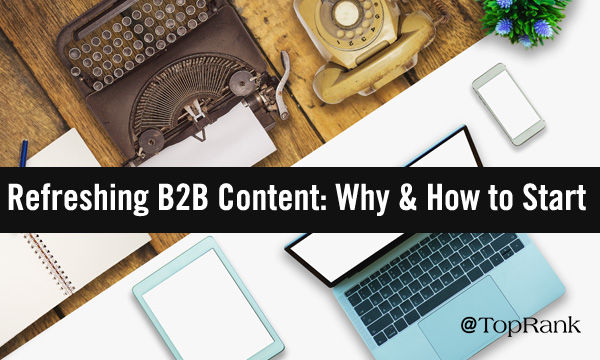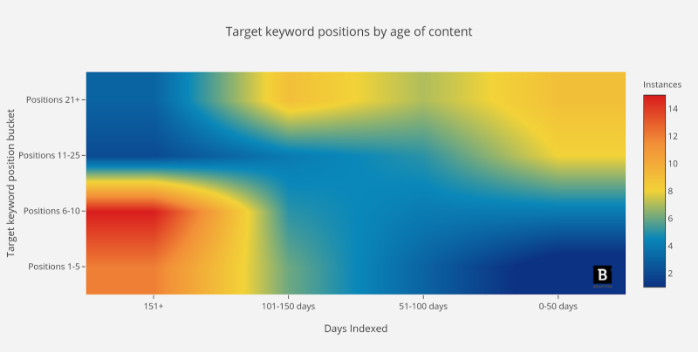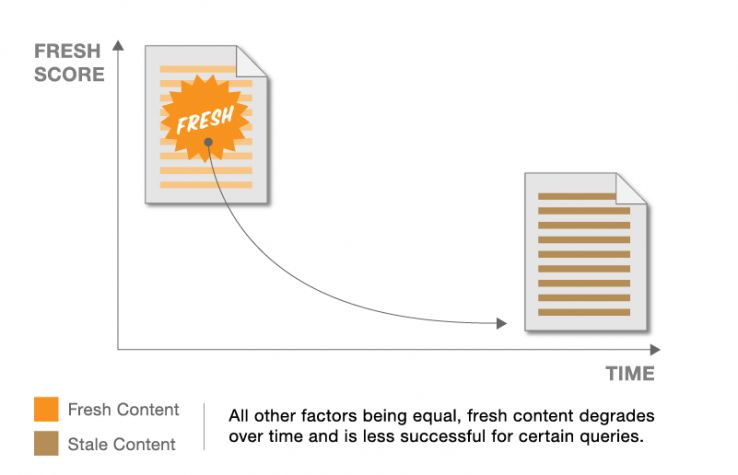
Content creation—it’s the linchpin of our B2B content marketing strategies. And 56% of B2B content marketers have upped their investment in content creation over the past year—more than any other spending area.
Without a steady cadence of fresh, quality content we can’t proactively adapt to our audience’s changing needs nor consistently reach, inform, engage, entertain, or inspire action within them. And for most content marketers, this effort is often grounded in creating net-new content. But freshness is the eye of the beholder; quality content creation doesn’t have to be done from scratch.
Refreshing existing content is a massive opportunity, playing an integral role within your always-on content marketing strategy. It’s not only more efficient to produce, but when done strategically, it can also boost results, improve user experience, and extend the life and relevance of the content you’ve worked so hard to produce.
As it’s been sung, everything old can be new again. Below are all of the reasons why you need to identify refresh opportunities and how you should approach it.
3 Reasons to Refresh Existing Content
#1 – Content takes time to “mature in search”—and needs to be nurtured.
SEO is a foundational element of content marketing. You know your buyers are becoming increasingly self-directed in their search for answers, and you’re creating SEO-informed content to satisfy their queries. But if you just focus on new content creation, you’re leaving potential on the table.
We’ve all experienced those sweet, near-instant wins in search results after a new post goes live. But typically, it takes time and smart optimization to gain consistent organic traction. In its post analyzing top ranking factors, Moz’s Jeff Baker discusses three different correlations between the age of a post and its keyword position. Based on their research, it took roughly 100 days or more for a new article to realize its full potential.

Image credit: Moz.com
While pages need time to mature, without the proper nurturing their relevance can degrade over time; this is the “fresh” factor. Essentially, strategically updating older posts can improve rankings as search algorithms prefer fresh over stale content. Data and insight should guide the type of updates you make, but updates could include optimization tweaks to capitalize on new related keyword rankings, expanding or refining content around certain themes, and link building.
Once again, Moz illustrates how freshness can fade in the eyes of search engines.

Image credit: Moz.com
Content takes time to mature in search, and it needs to be nurtured. @annieleuman #B2BContentMarketing #contentrefresh Click To Tweet
#2 – Refreshing allows your content to grow WITH your audience.
Search is constantly evolving. Not only are search engines getting more sophisticated, but the way people are searching has changed as well:
- Half of all smartphone users use voice technology. (comScore)
- Mobile phones are expected to be used for 80% of all internet access in 2019, a 10% increase from 2017. (Quartz)
- Mobile searches for queries with questions like “do I need”, “should I”, and “can I” have grown by at least 65% over the past two years. (Google)
As queries get more specific and question-based with natural language, making tweaks to your content to match those relevant queries and opportunities allows you to better match users needs. It paves the way for being the best answer, whenever, wherever, and however your audience is searching.
Read: Hey Alexa: How Do I Bake Voice Search Into My B2B Marketing Strategy?
#3 – Refreshing could give you leg-up on more than just your competitors.
Content marketing is no longer the new shiny object in the B2B realm. Content marketing is simply modern marketing. As content continues to proliferate you’re likely competing for visibility and reach with your direct competitors within your industry, as well as indirect competitors such as third-party review sites, industry publications, independent bloggers, technology providers, and so on.
There are hundreds of billions of webpages in the Google Search Index, and while serving different audiences and thought leadership purposes, there’s likely some overlap in keyword targeting. Let’s take “B2B content marketing” as an example—industry publications such as Search Engine Journal, tools like BuzzSumo or HubSpot, platforms like LinkedIn*, and of course B2B marketing agencies like us, have all produced content on this topic.
So, when it comes to refreshing content, you have the opportunity to see how your content is stacking up to all the competition and make data-informed tweaks to differentiate and personalize for your core audience.
How to Get Started with Refreshing Content
Identify Refresh Opportunities With a Content Audit
You’ve published a lot of content. And more than likely you have several that are top-performers, bringing in tons of traffic. You also may have some good performers or rising stars in there, as well as pieces that simply haven’t gained any meaningful traction.
Refreshes can help you bolster those top-performers and hopefully improve performance of other pieces.
To know where to focus your refreshing and optimization efforts, you need to know how your existing content is performing with an audit. By auditing your current content for current rankings, position changes, traffic trends, and more, you can see which posts have the greatest opportunity.
Content refreshes can help you bolster those top-performers and hopefully improve performance of other pieces. @annieleuman #B2BContentMarketing Click To Tweet
Put Experience in the Driver Seat
Refreshing is about both your audience and the search engine. So, when you revisit posts to make optimizations, you need to ensure you keep both parties in mind. Focusing solely on your audience could mean missing out on a critical SEO opportunity. And the opposite could be said when zeroing-in on SEO.
To tick both boxes, carefully research your content’s current user experience with metrics like time on page, click through rate, bounce rate, pages per session, or scroll depth. Analyzing these data points should give you an indication of which areas of the experience need the most attention and which sections of your content may need adjustments. This helps you avoid delivering an unsatisfactory user experience that results in drop-offs from both your audience and site crawlers.
Repurpose Where It Makes Sense
There’s refreshing and repurposing. Refreshing is updating something that already exists. Repurposing is taking something that exists and using it to create something new. And there’s a place for both in your content strategy.
When should you repurpose and when should you refresh?
A top-performing, broad post is a great repurposing opportunity. You’ve covered the topic with broad strokes. And through repurposing you can dig a little deeper into some of the specific themes or opportunities, using some of the existing content to support your narrative.
Conversely, in-depth content that is ranking for several long-tail keywords is another good repurposing opportunity. If you split the content into several pieces, with each one targeting a different long-tail variation, you could drastically improve those organic rankings and traffic — all by repurposing and restructuring the original piece.
In addition, repurposing can help you personalize content for specific verticals or audience segments. Through repurposing, you can take an existing article and tailor it for a different target audience with new data that’s relevant for them, solutions to their biggest pain points, and more.
Read: A Tasty, Strategic Addition to the Content Marketing Table: ‘Repurposed Content Cobbler’
Refresh for Success
Everything old can be new again. From SEO to growing your content to match your audience’s needs, there are several benefits that come from refreshing content. Refresh for success by conducting a content audit, keeping both humans and search engines in mind, and repurposing when and where it makes sense.
How else can you maximize the value of your B2B content? Get an inside look into the future of B2B Content.
*Disclosure: LinkedIn is a TopRank Marketing client.

Comments are Closed